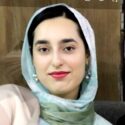Digital advocacy has reached new heights since the onset of the Israel-Palestine conflict. In the war of public opinion and consensus, pro-Palestinian activists have increased engagement via an artificial intelligence image circulating social media. The striking element of the post is the viral phrase i.e. “All Eyes on Rafah” which materialized when the World Health Organization representative for Gaza, Rik Peeperkom, first used it to describe the crisis. Since then this phrase has been used by Palestinian demonstrators around the world.
In this regard, the breakthrough it witnessed due to AI has angered critics but proponents argue about the heightened international attention it has manifested. Henceforth, this article critically analyzes the AI-generated image, depicting tent camps, that has been shared by millions.
Origin of the AI-generated Image
The slogan “All Eyes on Rafah” is a popular tagline of the viral AI-generated image produced by a Malaysian user called “shahv4012.” The picture showcases orderly rows of white tents that spell “All Eyes on Rafah” with scattered settlements around it and, mountains and clouds seen far in the distance.

The social media post surfaced on 26th, May 2024 after a military attack by the Israeli forces on a refugee encampment in north-western Rafah (declared a humanitarian safe zone), causing deadly fires killing 45 people and injuring 200. According to Palestinian health officials, more than half of the causalities were women and children.
This resulted in global condemnation as pro-Palestinian activists, support groups (Save the Children, Oxfam), celebrities (Bella Hadid, Dua Lipa, Malala Yousafzai), and influencers have shared the template on Instagram, thus drawing attention to the current developments and the continuous Israeli assault on the city of Rafah. It has been reposted by more than 47 million people on Instagram through its “add yours feature” thus bypassing text-based censorship.
Nevertheless, despite the positive intentions behind the post, critics have debated that the image has masked the reality of Palestinian repression and lived experience. It has obscured the violence and the massacres carried out daily, thus illustrating an unauthentic and sanitized version of the genocide. The sensitive issue is subjected to “slacktivism” or performative activism, which has been increasingly compared to the black squares that stormed social media during the Black Lives Matter protests in the USA.
“Performative activism is not helpful. Education and sustained activism and action are. Push yourself out of your comfort zone and get acquainted with that feeling.”
Activist Alana Hadid
Therefore, Matt Navarra, a U.K. social media consultant and analyst reaffirms that it is a token gesture that encourages quick reshares rather than proactive support in the form of fundraisers that do make a difference. Subsequently, this overshadows the hard work of war correspondents who work tirelessly by documenting the daily horrors. This signifies that AI might lead to digital erasure and promote media bias against the Palestinians.
But on the far side, some are of the view that owing to the growing censorship from media platforms like Instagram and Facebook, Palestinian activists can salvage AI imagery for sustained action against Israel. Since graphic imagery involving death and violence is not used, it has not been shadow-banned by content filters thus signaling to a new form of storytelling. This new tool in the ongoing movement has prompted worldwide awareness of a protracted conflict, persuading people who for the first time acknowledged that a massacre is taking place in Gaza.
Adding on, such forms of performative expressions are more helpful in the long-term as mounting pressure can urge leaders to establish policies that can result in positive social change such as sanctions against Israel and increasing aid to the Palestinians. Quick reshares, in this case, provide agency to those who have little control over the outcome of the conflict. Links to fundraisers, letter-writing campaigns, and petitions have also been attached to the template thus increasing its appeal.
Regardless, the criticism of “All Eyes on Rafah” has generated discussion and has been a successful step in the ongoing social media campaign against lobbying politicians. In the fight for justice, all tools must be used to best the enemy. This has forced Israel to also use artificial intelligence to further their public opinion. Slogans like “Bring them home now” referring to Israeli hostages and “Where were your eyes on October 7” are being featured on AI-generated images. Their counter-efforts did not gain a worldwide spotlight, but they did try to overpower the Palestinian narrative.
Taking a cue from the success of social movements in the past, we can’t ignore the worldwide uproar it has caused. Referencing the above analysis, the statement “All Eyes on Rafah” has conveyed the notion that any important developments in Rafah, the epicenter of the current Israel-Palestine war are being closely monitored. Henceforth, before diving into how effective the AI image is, it should be understood that any form of awareness is a welcome step towards a possible cessation of hostilities in Gaza.
In this regard, social media platforms have been increasingly useful in untethering the horrific effects of the Israel-Palestine War. It has been the catalyst to change perception and encourage global action. In addition, the misconception that AI might dilute Palestinian suffering is not correct. Pro-Palestinian supporters will always make sure the bloody impacts of the genocide are showcased. Artificial intelligence is another weapon in the revolutionary struggle against the apartheid Israel state, therefore this social media movement has turned out to be a defining moment since the onset of the Israeli genocide on Oct 7, urging more and more people to show solidarity with the Palestinian cause.
If you want to submit your articles and/or research papers, please check the Submissions page.
The views and opinions expressed in this article/paper are the author’s own and do not necessarily reflect the editorial position of Paradigm Shift.



